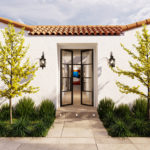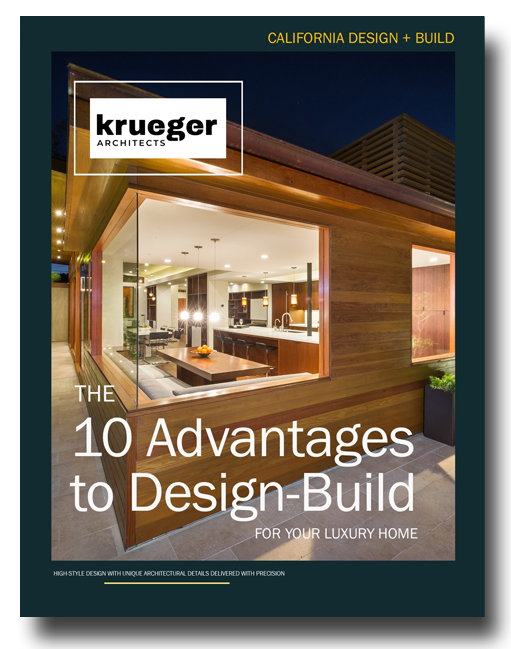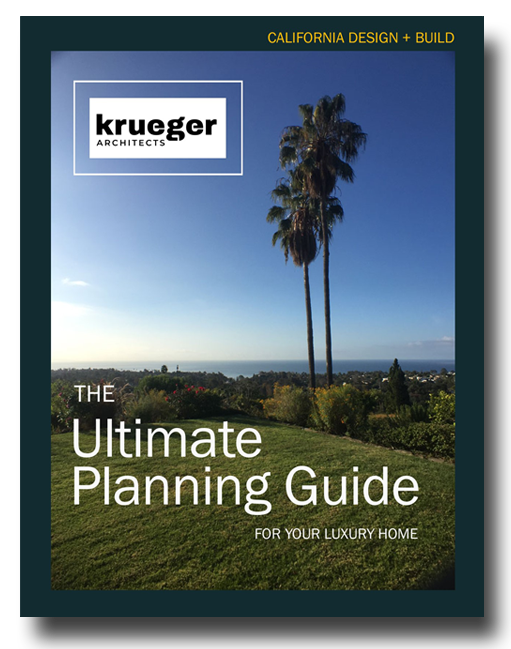Los Angeles is notorious for being a hodge podge: a region with a rich history from the days of the Native Americans, through the gold rush and World Wars, the Hollywood Glamour days, and now into modern California. A collection of different cultures and lifestyles makes for a showcase of architecture in my backyard.
I’ve been taking day trips and weekend excursions to different places off the beaten path while living here in Southern California. I’m a transplant from the Midwest and I enjoy searching for what’s authentic to LA and discovering Southern California’s rich history.
Here are four of my most favorite recent finds. Even if you’ve lived in Southern California all your life, it’s easy to have missed at least one of these; if you happen to have seen them all, enjoy this tour as a way of seeing the region with fresh eyes.
1) Lovell Beach House in Newport Beach
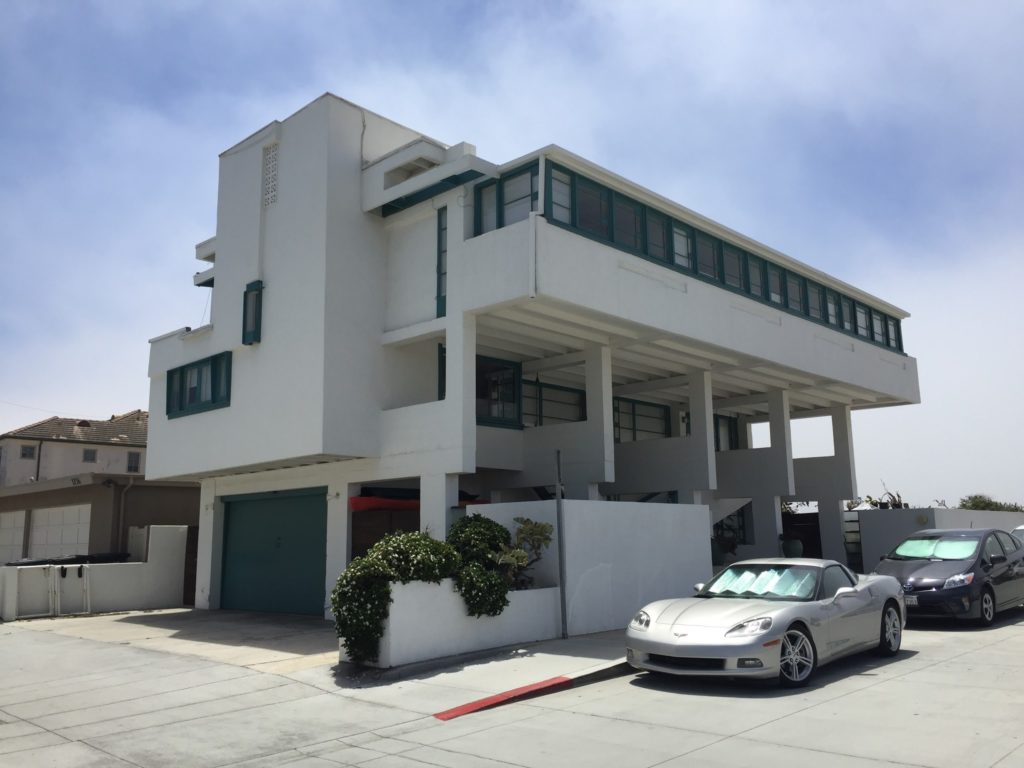
About an hour south of Brentwood is the Lovell Beach House in Newport Beach. Built in 1926 by architect Rudolph M. Schindler, this is a landmark house. A private home, it is not regularly open to the public, but if you’re lucky enough to get a reservation for a tour, you can walk right up the beach to it and see for yourself Schindler’s impressive design.
Schindler is one of my favorite architects, not only for his style–he developed what’s known as the California International Style–but because he worked in the design-build tradition of architectural development and was himself an Architect-Builder. He was one of the inspirations for me and my practice to take up the integrated approach of a single firm who is both Architect and Contractor. Although not very common today, this method of Design-Build allows for continuity during the entire project, which controls cost, ensures quality of both design and construction, and saves valuable project time (no miscommunication, no change orders, and no waiting on various trades).
Schindler was in command of the design and the job site–he’s a hero of mine. Like many architects who come out to California, he experimented. This home incorporates concrete geometrical structures and large open spaces. He uses technologies that were way ahead of the time. What’s most rewarding to me in my own work is when we can push the boundaries of architectural convention because of the confidence and knowledge that comes from my construction experience.
2) Paul Revere Williams Seaview Development in Palos Verdes
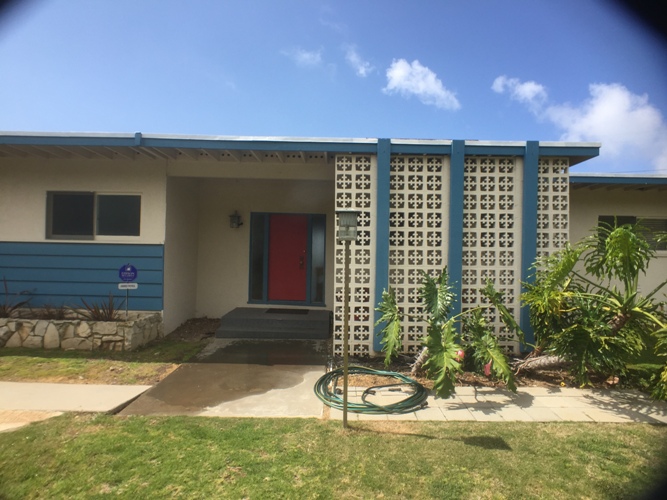
Another place off the beaten path is the community of SeaView in Palos Verdes designed by architect Paul Revere Williams. Developed in the beginning of the 1960s for veterans and homeowners wishing to upgrade, as described in the LA Times article detailing the project, the development of 190 tract homes boasts eight floor plans with a multitude of exterior styling options. Approximately 95% of the original residents were veterans and the $34,000 to $43,700 price made it an affordable option.
Williams, another Architect-Builder, received his contracting license before becoming a licensed architect. He spent over five decades in practice. He is most well-known for the homes he designed for the stars, but his work on smaller scale homes in developments like SeaView are also worth examining. Williams understood that architects can create homes with smaller budgets that provide value for everyday folks. By coupling design and construction, costs savings from the consolidation of project overhead and time gained from having one person leading can be channeled back to the project to enhance what is built.
3) Old Mission San Fernando
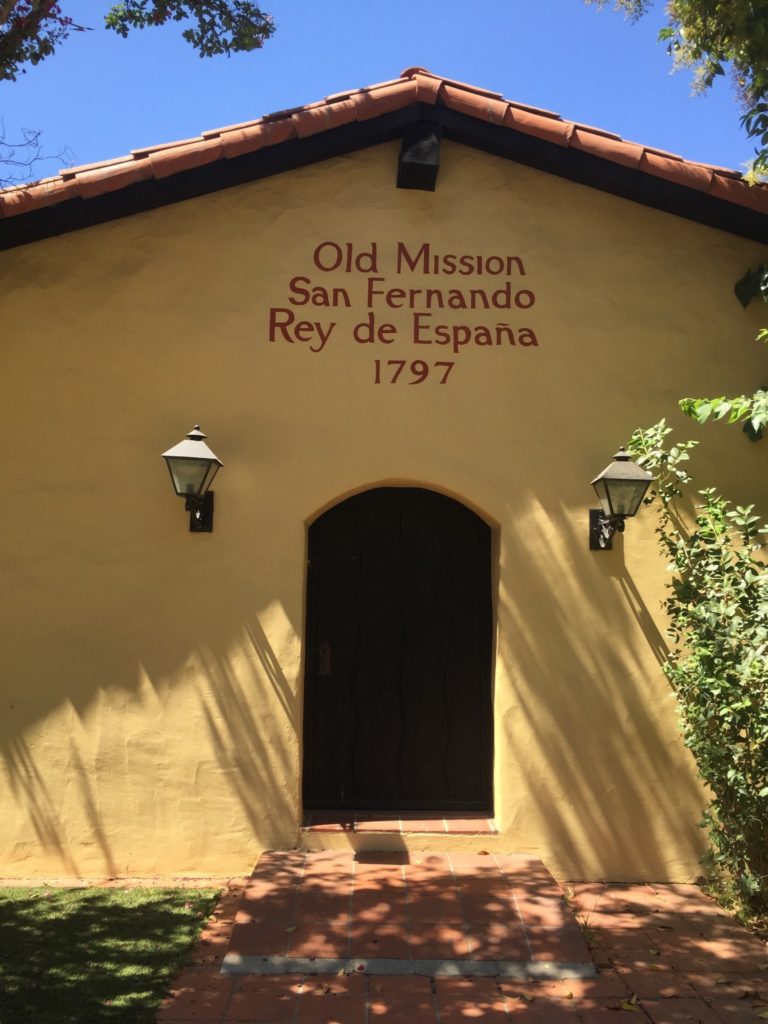
There are lessons to be learned in the heart of LA, too. Old Mission San Fernando was one of the earliest buildings in LA. These early Spanish mission buildings were constructed in 1797 when the land was barren and Native Americans were still in the area. The walls were created with adobe bricks, which helped occupants keep cool during the summer and warm when the wood fireplaces burned in the winter. Back then, people created simple yet intelligent solutions out of necessity, such as the use of adobe walls and the idea of building their church and other communal buildings in a square layout–this interior courtyard protected them from dangers, including wild animals, but was also a community gathering place.
Many of these lessons may now be forgotten, but I encourage my clients to remember they have options: if the sun is beating down on the home, there are alternatives to cranking up the air conditioner. Smart design can be energy efficient. Geo-thermal is a way for the earth to help cool and heat homes. During new home construction, site planning is key to get the maximum impact from natural elements, such as trees that can shade a home. I won’t just level out the land; I like to work with the natural topography and work with the land, rather than against it. When I browse old photos of Brentwood , I pay particular attention to the native species of plants and trees, so that when appropriate they can be added back in to create harmony with the environment.
4) Soldier’s Home Station at the Veterans Home of California
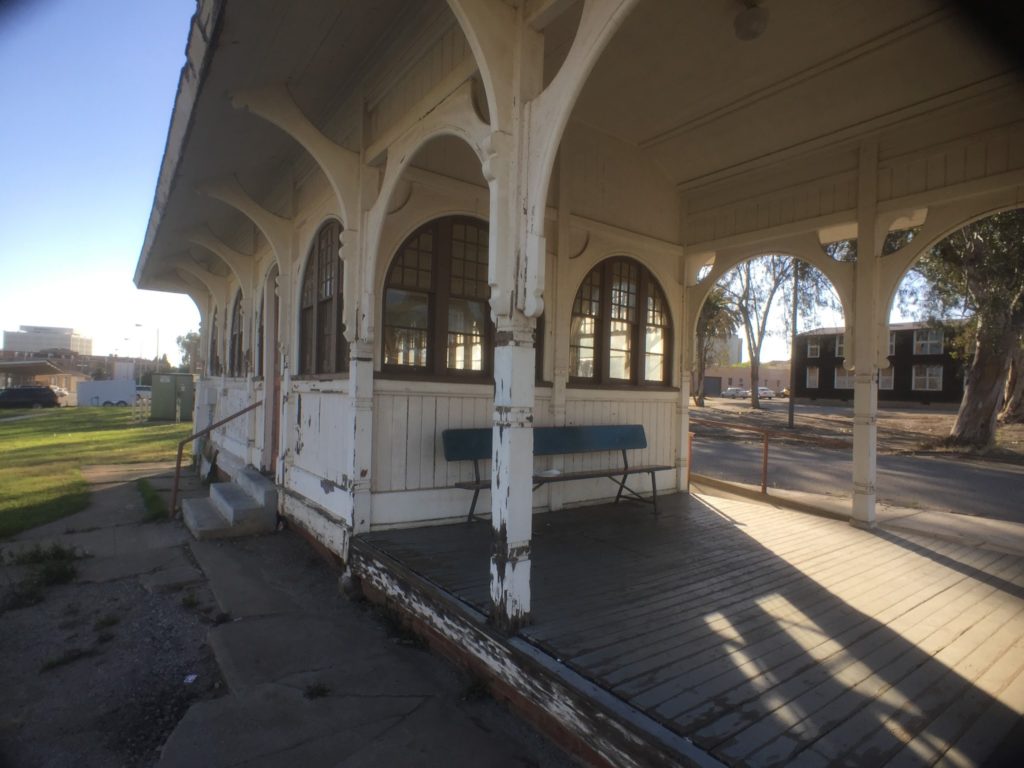
Visiting a recent project nearby on San Vicente Boulevard, I notice the wide grassy median in the middle of the street. This space was once dedicated to railroad tracks which connected the communities of a very young Los Angeles. One of the main stops along the way was the Soldier’s Home Train Station. Soldier’s Home Train Station at the Sawtelle Veterans Home of California operated during 1900–1953. Sawtelle is one of the first developed areas in Brentwood and it lies on the border between Brentwood and Westwood. Today, there are no more trains, no more horses and buggies. Mature coral trees stand on the area where the tracks once ran.
I specialize in the Brentwood area. I’m focused on local history, which is critical to understand why a place matters. When we realize where we’ve come from, we can make better decisions moving forward. A certain continuity runs through our lives, and we draw inspiration from the past to improve our future. Understanding what came before helps me approach certain situations in a smarter way, and I feel humble as a result of learning yesterday’s lessons.
I love learning and exploring new places. For me, the most ordinary places can be the most fascinating. I hope to return to these sites, but there are so many places on my list in Southern California yet to see. Please reach out to me to let me know your recommendations for the best places in Southern California to visit for unique and significant architecture. I’m especially drawn to places from a different era.
I encourage everyone to travel. Even on a day trip, you’ll see how vast the world is–the many cultures and their food, music, and architecture all coming together in countless combinations. Tourist attractions are great and popular, but the best lessons in life are learned off the beaten path.



